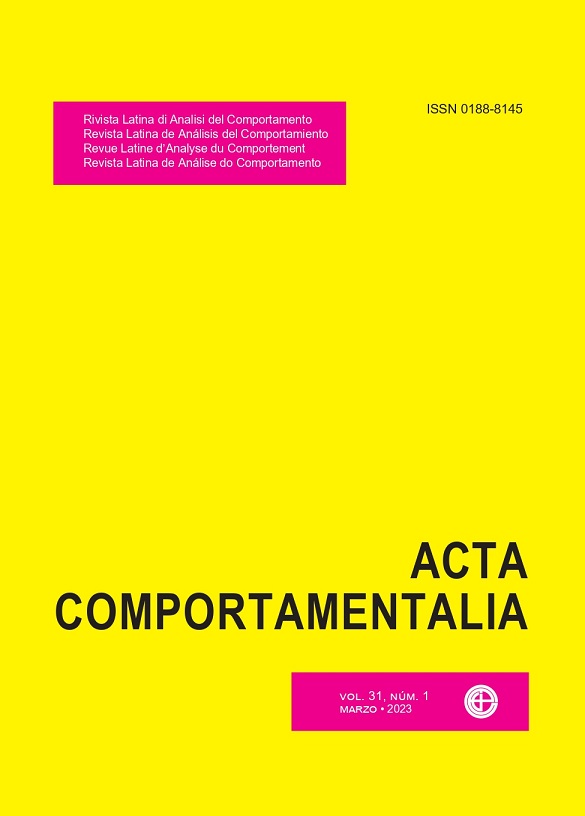Teaching the Classification of Consonant and Dissonant Chords through a Multiple-Exemplary Training
DOI:
https://doi.org/10.32870/ac.v31i1.85005Keywords:
musical chords, conditional relations, auditory stimuli, auditory discrimination, musical skillsAbstract
The experimental procedure aimed to teach non-musician participants to classify musical chords regarding consonance and dissonance. Twenty (12 woman) undergraduate students aged between 20-27 years (M: 21.45; SD: 2.08) participated in the present experiment. Consonant chords were composed of fundamental, perfect fifth, and octave; dissonant chords, in turn, were composed of fundamental, triton, and octave. Consonant and dissonant chords from 12 notes of occidental chromatic scale, ranging from C3 to B3, were used. During each of the four training phases, participants were taught to identify consonant and dissonant chords of three different fundamental notes. These four training phases were interspersed by four test phases to verify if the participants could identify consonant and dissonant chords with fundamental notes different from those used during training. Although we cannot observe a homogeneity in the participants’ performance, most of them demonstrated a gradual evolution in the number of correct choices throughout the training and, to some extent, also in the test phases. When taken together, these results showing that this training procedure can be promising, mainly if performed for a greater number of sessions. Classifying chords into consonance and dissonance can be a prerequisite for learning to classify chords in terms of more complex characteristics, such as major, minor, augmented, and diminished chords.
Downloads
Downloads
Published
How to Cite
Issue
Section
License

<a rel="license" href="http://creativecommons.org/licenses/by-nc-sa/4.0/"><img alt="Licencia de Creative Commons" style="border-width:0" src="https://i.creativecommons.org/l/by-nc-sa/4.0/88x31.png" /></a><br />Este obra está bajo una <a rel="license" href="http://creativecommons.org/licenses/by-nc-sa/4.0/">licencia de Creative Commons Reconocimiento-NoComercial-CompartirIgual 4.0 Internacional</a>.






